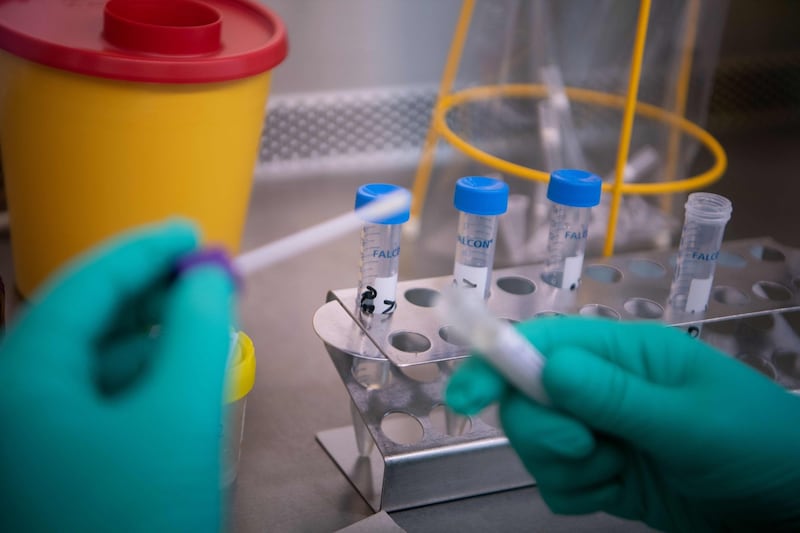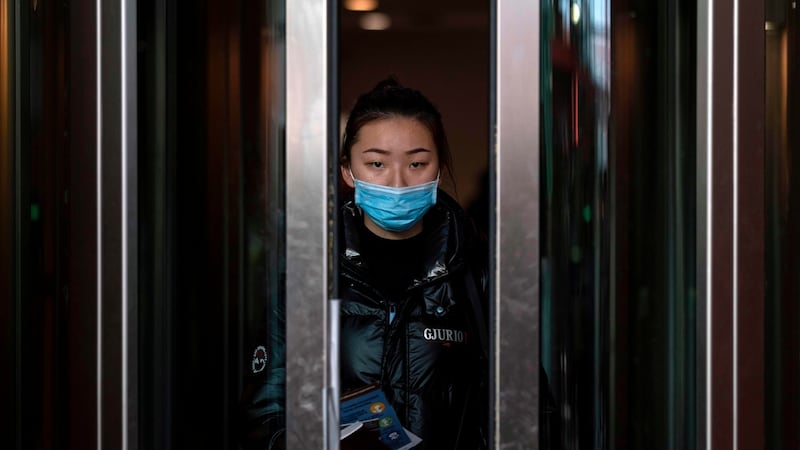So far this winter, it has killed scores of mostly old people, infected thousands and brought hospitals to a standstill. But that's enough about the flu's effect on the Irish health service; what people really want to know about is the threat posed to them by the emerging coronavirus outbreak in China.
And while there are many reasons to be hugely concerned about this new disease, it is worth noting first that the number of casualties from the Chinese outbreak is so far not a whole lot greater than the toll extracted by the flu in an average Irish winter. Understandably, it is the enormous potential of the coronavirus to wreak havoc that is exercising minds across the globe at this moment.
In a fast-moving story, the UK has announced its first cases, the US its first cases involving person-to-person contact and the World Health Organisation, after some internal disagreement, has declared the outbreak a public health emergency “of international concern”.
The sense of foreboding is immanent in the staccato language used to convey the awful drama now unfolding. Isolation. Lockdown. Stricken. Frantic. In the affected parts of China, schools have been closed, transport links severed and new year celebrations abandoned, as the authorities attempt to impose a form of mass quarantine on millions of people.

The images are terrifying but, among scientists at least, there is little shock at the arrival of a new predator in our midst. Since the Sars (severe acute respiratory syndrome) outbreak of 2002-03 it was always a matter of “when” rather than “if” a new version of this virus would emerge. Further, if such a new virus were to emerge and take hold, China, the most populous country on earth, was always likely to be where it would occur.
"I can't say I'm wildly surprised this has happened," says Prof Samuel McConkey of the Royal College of Surgeons in Ireland, one of a small group of infectious disease consultants who will be at the forefront of treating patients should cases arise here.
Unfolding narrative
Like many in his profession, McConkey has watched the unfolding narrative in China with growing concern. “The lack of care, people being turned away, the overfilled emergency rooms – one-quarter of the victims have pneumonia and they need oxygen therapy to keep them alive,” he notes.
“China may have one of the biggest economies in the world, and it may be a well-organised society, but it is clear that its health system is completely overwhelmed by the new epidemic.”
Like Sars, this is a member of the coronavirus family. It originated in China and probably spread to humans from wild animals via a local market. A month on, we have learned a lot but it still is not clear how bad this outbreak will be.
“It looks at if it’s still growing; I’m not seeing any evidence it’s coming under control,” says McConkey. He believes the virus, if it does come to Ireland, will arrive “gradually, drip by drip”.
He does the sums. “If this virus has an attack rate like influenza, which affects 20 per cent of our population every year, 1 million people could get it. Even with a mortality rate of 2 per cent, that’s 20,000 deaths.”
This is a “horrendous spectre”, he admits, a worst-case scenario, and at this stage nothing more than a possibility that must be prepared for.

Whatever happens clinically, the economic impact of the outbreak is already being felt. Tens of millions of people in China are in lockdown, school holidays have been extended, flights have been grounded and tourism curtailed.
The Sars epidemic had a serious but ultimately short-term negative impact on the Chinese economy, but the stakes are much higher now.
Back then, at the start of the millennium, China accounted for 4 per cent of the world economy; now, it’s up around 16 per cent. If is suffers, we will too, in some form. It’s no wonder, given this level of interconnectedness, that oil prices and stocks have already fallen.
Countries outside China have a window of six to eight weeks to prepare for the possibility of the virus not just arriving but spreading within their borders, McConkey says. Now is the time for Ireland to make detailed preparations.
The approach so far has been low-key; deliberately so, perhaps. Airports, schools, colleges, hospitals and family doctors have been put on notice to watch out for possible cases.
Treatment algorithms have been distributed, which would see people who match the travel and symptom criteria placed in isolation, and cared for by medical professionals wearing protective gowns and eye-masks.
For most people in Ireland, the coronavirus is still just a news story on the television, rather than a realistic worry. Not so for our burgeoning Chinese community; many Irish Chinese used the recent Christmas holidays to go home, while others travelled to Asia during the lunar new year period in January.
The heightened concern of local Chinese people is palpable. Suppliers of surgical masks have reported a run on supplies, with some saying they are out of stock, largely due to demand from the Chinese community.
Some in that community went online last week to express their concern about the presence in Ireland of a tour group from Hubei province, the area where the outbreak started, last weekend. One member of the group blithely pictured herself in front of tourist landmarks in Dublin and Belfast, to the obvious irritation of some Chinese people living here.
It is hard to get the balance right when dealing with an outbreak such as this. For every person claiming “nothing is being done”, another will raise the hare of scaremongering.
Ultimately, the Sars outbreak of 20 years ago was effectively suppressed, though not before 800 people had died in China. Ireland coped well, with only one imported case. But after the 2009 swine flu epidemic, the Irish health service was left with massive stocks of expensive, unused flu vaccine, amid claims from some quarters the risk from the outbreak had been exaggerated.
McConkey says there is no alternative to expecting, and planning, for the worst. “We may end up with loads of unused gowns and gloves at the end of this, but otherwise we would have been overwhelmed by the virus.
“If you’re building a sea wall in Clontarf, you want one that will last for 40 to 50 years; you plan for the worst-case scenario. Similarly, we need 99 per cent of potential cases covered by our plan.”
That includes plans for allowing for people on sick leave or self-isolation, contingency arrangements, and providing for staff to work from home as a precaution. Thanks to the digital revolution, that should be possible in many sectors – “so long as the electricity keeps going,” McConkey points out.
![Prof Samuel McConkey, infectious disease consultant: ‘It looks at if [the virus] is still growing; I’m not seeing any evidence it’s coming under control.’](https://www.irishtimes.com/resizer/v2/TU4VDIJ7ASCN4WJMB2N247WDKM.jpg?auth=59c814995a245c31112aa234d81f95d6b865da8d99b1ae46436030547474d935&width=800&height=632)
Despite the spread of the disease, there are cautious grounds for optimism about this latest health threat. China has reacted more quickly and in a more transparent manner than it did with Sars.
The new virus does not appear any more infectious than Sars, and has a lower death rate. For many, its effects are relatively mild.
The experts will be watching for cases involving secondary infection, such as have already occurred in Germany, as an indication that the chain of transmission of the disease is uncontrolled. A key uncertainty at this stage is whether patients can be infectious before they show symptoms.
A month on, other questions remain to be answered definitively. How long does it take symptoms to emerge? What are the risk factors? How does the virus spread?
The present outbreak is the first to occur in the age of social media. This may be a mixed blessing. China tightly controls its social media, but even so, images and messages have emerged from the affected regions that illustrate the eerie, terrifying reality of mass illness.
On the other hand, more than the usual quotient of misinformation, scaremongering and nay-saying has been evident online in relation to the virus. Conspiracy theorists have claimed variously that the outbreak was planned, or that it was the result of a bio-weapon leak from a Chinese lab. Videos have appeared purporting to show Chinese people eating bat soup; one was debunked as a four-year-old clip filmed on a Pacific island.
‘Hope for the best’
Twenty years ago, when Sars hit, there were no direct flights between Ireland and China. The Chinese community here was minuscule. Not so anymore, though if anything, the local Chinese population are more alive to the threat involved than the rest of us.
As an infectious disease specialist working in Beaumont Hospital, McConkey knows that means he may end up caring for patients with the virus, which has already downed many health staff in China. “I’m a frontline health worker in the real world,” he says. “I’m okay with that, but others may not.”
It remains possible, not probable, that Ireland will have a case, he says. “If, over the next 14 days, we see uncontrolled transmission of the virus in Europe, if the standard precautions of gloves, gowns and isolation are not working, then it is very likely to come to Ireland.”
The number of cases has risen sharply as this week has progressed, though it is the nature of such outbreaks that things have to get worse before they get better.
With any new uncertainty, such as that posed by the coronavirus, McConkey says “you’ve got to hope for the best and plan for the worst, and then expect something in the middle”.




















